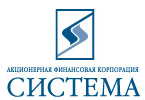|
|
|
 |
Virtual Tours round the Russian Museum The Benois Wing |
     |
The Russian Museum
»
The Benois Wing
»
Room 67
Room 67A widespread phenomenon at the start of the twentieth century was a return to Russia’s national roots. Philosophical paintings-meditations on Russia were painted in this period by Mikhail Nesterov (1862–1942). His images glorified the ascetic life of hermits and the common spirituality of those who have withdrawn from modern life. The Great Taking of the Veil (1898) is the finest work from the cycle of paintings by Nesterov on the fate of Russian women, inspired by the novels of Pavel Melnikov-Pechersky on the lives of the Old Believers. The artist depicts a procession of nuns accompanying a novice to the taking of the veil among the thick forests of the Volga countryside. A quiet sorrow shines in their pensive faces. Mikhail Nesterov was elected to the Imperial Academy of Arts for this painting in 1898. Oriental themes were prominent in the works of many artists working at the start of the twentieth century. The brightest of them was Nicholas Roerich (1874–1947), a pupil of Repin and then Kuindzhi. Roerich had a deep interest in history, philosophy and travel, sailing around the Great Water-Way as a young man (1899). Pictures of the Russia of the past had then sprung up in his imagination. Drawing on impressions gained from his travels, Roerich painted a cycle of pictures dedicated to Rus’s Varangian period (Overseas Guests 1902). In 1923 Roerich went on an expedition to Central Asia, after which he founded a scientific research institute in India to study the Himalayas. A whole series of Roerich’s works are devoted to these mountains. |
The Project “The Russian Museum: the Virtual Branch” |